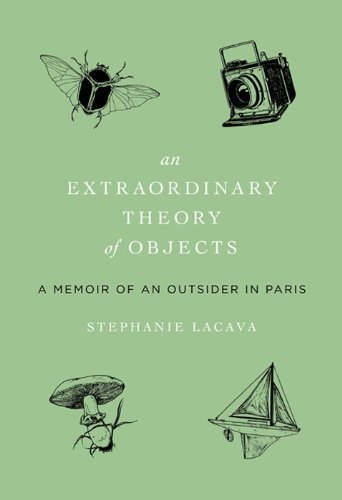I have a love/hate relationship with Paris. Like many people, I expect, I had a romanticized notion of Paris, which I was quite aware was unreal. But I still wanted to see the storied place of Latrec, Ilse Bing, Cocteau, Hugo, Doisneau, and Brassaï. There must be something that drew them, inspired them all.
If there was, they took it with them.
Although there were certain things that we did that we enjoyed, as a city, a place, it was dreadful. It was dirty, with rotting small animals left in public parks. Every few years another agressive peddler tried to sell you the same cheap trinket. The Metro was filthy and not well-run. But I somehow managed to take stunning photos. Maybe that is Paris’ spell.
I couldn’t help but think all this as I read Lacava’s fantastic memoir. She was moved to France as a thirteen year old. Already fragile, she is thrown into a new world, a new school, new country, new language. One of her coping mechanisms is to collect random objects that are important to her. No one seems to understand it, or her thought process, or even the inner pain she is experiencing.

The book is series of intertwined episodes during this confusing time. Each essay shimmers along until the little asterisk signals a tangential explanation. The footnotes sometimes last for three pages, dwarfing the “actual” text. But this is the charm, and indeed, the strength of this memoir. As the reader, we are given insight into how Lacava’s nonlinear thinking works.
Alone and unaccepted by other girls, I also loved biographies or fiction about alluring and iconoclastic women who would come to feel like real-life companions. Reading was a Pascalian diversion; stories and facts were a distraction from spiraling thoughts. I had always hated loudness. It was loud enough in my head.
This mania extended to animals, people, and places — a city, even strangers in the street. I had a game where I liked to imagine what sort of pajamas each passerby might wear. This came from a belief that the more I know about the inner lives of others, the more I might understand the world. Collecting information and talismans is a way of exercising magical control. You can hold a lucky charm and known everything about nature’s creatures yet still be terribly lonely. ~Pg. 3
In some ways, I think many young girls who are “different” but brilliant have these inner conversations and games. It’s a way to exercise the mind without exposing themselves to ridicule.

Her writing is unflinching. She is brutally honest about her self and her familial disappointments, but this is not a self-indulgent pity party. This is insightful writing at its best — and it’s an extremely enjoyable read.
My sincere thanks to the folks at Harper for the advance review copy and for sending the images for me to inlcude.
________________________
ISBN: 9780061963896
ISBN10: 0061963895
Imprint: Harper
On Sale: 12/4/2012
Format: Hardcover
Trimsize: 5 x 7 1/4
Pages: 224
$23.99
Ages: 18 and Up


Lovely review- the footnotes sound especially interesting. This one is on my ‘gifting’ list for the holidays for sure!